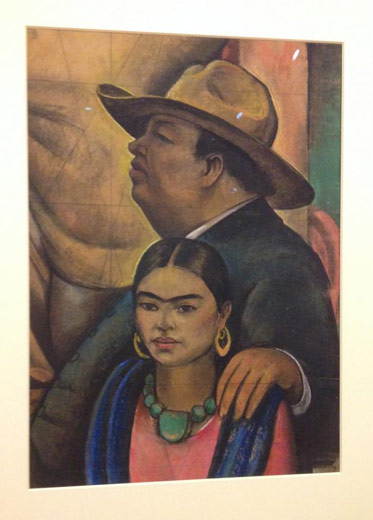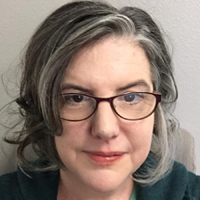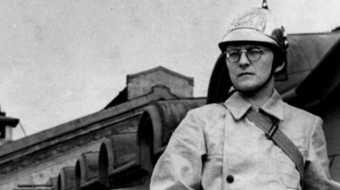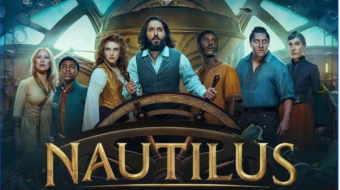
Curators, from both San Francisco Museum of Modern Art and Oakland Museum of California, teamed up to craft an exhibit showcasing the influence of community across four important periods of California art.
While all four-time periods presented are of great interest- the first gallery presented, Patronage, Public Art and Allegory of California, is especially rewarding for a viewer with an interest in labor and political history, highlighting a rich overview of the creative community that thrived in the Bay Area in the 1930s.
The decade opened, artistically, with the arrival of Diego Rivera and Frida Kahlo in San Francisco. The pair were heralded by a supportive progressive art community, which included businessman and patron of the arts Albert Bender, as well as several artists in the Bay Area which had worked with the couple in Mexico or had been influenced by both their artistic methods and Communist politics.
A flurry of debate over the appropriateness in hiring a devoted anti-capitalist to decorate the west coast temple of commerce was launched when sculptor Ralph Stackpole secured a commission for his friend Rivera to create murals for the Pacific Stock Exchange. OMCA’s gallery signage pokes gentle fun at this controversy with the title “A Communist at the Stock Exchange” in the section depicting the mural created by Rivera, Allegory of California. The resulting work of art, however, was far milder than the work Rivera created in New York in1934, Man at the Crossroads, which so infuriated his patron, John D. Rockefeller Jr., that he had it chipped off the wall of Rockefeller Center.
The closeness Kahlo and Rivera shared with the arts community in the Bay Area is represented by two beautiful paintings by Kahlo, one a portrait of the couple with words commemorating their visit, the other a portrait of Dr. Leo Eloesser, a leftist activist who would go on to serve in the Spanish Civil War. Kahlo painted several portraits during the couple’s stay in San Francisco, while Rivera completed public projects.
The first art-related New Deal project in the country, even predating the better-known Works Project Administration, was the Coit Tower mural project, which commissioned 27 artists to decorate the interior of this unique feature on Telegraph Hill in San Francisco. Most of the artists were socialists and Communists, who were also influenced by Rivera’s artistic style and his employment of mural art to inform and educate utilizing public art. (Refreshingly, OMCA’s gallery signage includes the political views of the artists, in a matter of fact manner, along with their other biographical information.)
The San Francisco waterfront was a center of strong labor ferment, especially among the longshoremen, under the leadership of Harry Bridges. A display in the gallery is devoted to the events leading up the 1934 San Francisco General Strike, including archival material from news outlets reporting on the struggles. Dorothea Lange was present at the large May Day gathering that foreshadowed the strike, and two of her photos documenting speakers and members of the crowd are on exhibit in this section.
Spring and summer of 1934, artists painting up in Coit Tower were able to witness events unfolding down the hill from the windows of the tower, including Bloody Thursday, July 3, 1934, the day of a reactionary police attack on striking workers. Two men, Howard Sperry and Nick Bordoise, a CPUSA member, were shot and killed by police,
The Coit Tower artists were fighting their own battle in the tower, as the entrance to the murals was padlocked, in reaction to controversy over Marxist, Communist and other left-wing imagery depicted in the murals. It was felt that the artwork was feeding into the unrest at the docks, and one mural by Clifford Wight, depicting the hammer and sickle, would be mysteriously painted over, a historical puzzle that still remains unsolved. (KQED, Let’s Get Lost) The artists also picketed at Coit Tower on hearing that Rivera’s Rockefeller mural had been censored, which also fueled their drive to depict radicalized political content in their artwork.
Although the theme of the show is community and how it leads to creativity by fostering connections among artists, the question left unasked by the show is, how is community created? Proximity, shared resources, shared views and challenges all work to bring people together, but what creates a shared sense of purpose that creates a vigorous and unique art movement?
Fertile Ground does make the case that striving in isolation, despite the stereotype of the lone starving artist, does not reflect historical reality for well-known California artists. In the case of the New Deal artists of San Francisco, arguably it was the support of social programs like the WPA that made it possible to live free from starvation, create works, and collaborate with each other in public spaces. The social forces of the times influenced viewpoints and subject matter, but it was a government commitment to put artists to work that allowed those viewpoints to flourish.
Fertile Ground: Art and Community in California
Oakland Museum of California Sept. 20–April 12, 2015
Link to slideshow of photos from exhibit: http://s955.photobucket.com/user/mpkartist/slideshow/Fertile%20Ground%20OMCA
Photo: Diego and Frida, from the slideshow










